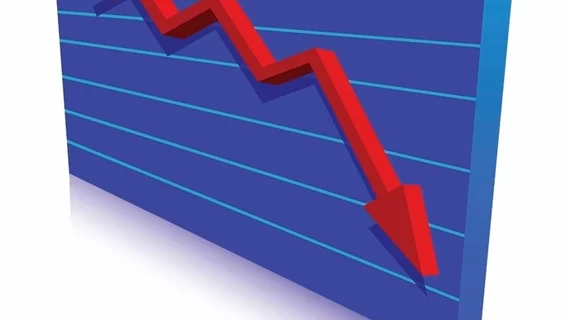Medical imaging radiation exposure fell by 20% over past decade
Radiation dose from medical imaging has dropped substantially in the U.S. over the past 10 years, bucking a nearly quarter-century-long trend in rising exposure.
That’s according to research published March 17 in Radiology that analyzed changes in per capita exposure from 2006 to 2016. A large driver of this fall is attributable to a decrease in nuclear medicine procedures and technological advances in computed tomography scanning, authors of the study noted.
“One important factor is the dose modulation techniques available on most CT scanners in the country,” said Mahadevappa Mahesh, PhD, professor of radiology and cardiology at Johns Hopkins University School of Medicine in a statement. “The second factor is that overall CT detectors are becoming very efficient in the sense that they can utilize less radiation to create the same quality images.”
Medical imaging utilization has skyrocketed over the past few decades, drawing concerns over the potential harm to patients. In fact, a study published in 2008 found that per capita exposure increased six-fold between 1980 and 2006.
Experts pointed to CT scanning and nuclear medicine exams as the primary culprits, which led to large-scale efforts on behalf of medical societies and equipment manufacturers to remedy the problem. The impact of those approaches, however, has remained little understood.
With this in mind, Mahesh and colleagues analyzed the estimated 377 million diagnostic and interventional radiology exams performed over the 10-year study period. Overall, the number of exams did not change much, but the estimated annual per-person dose from these procedures dropped from 2.9 millisieverts (mSv) in 2006 to 2.3 mSv in 2016—a 20% decrease.
The authors pointed to the “substantial” decline in the number of nuclear medicine procedures, from 17 million in 2006 to 13.5 million in 2016. This cutback was most pronounced among cardiologists, who flocked to exams requiring less radiation after CMS made a strategic cut to Medicare reimbursement.
“Nuclear medicine basically fell off a cliff, possibly due to cardiologists discovering that reimbursement was way down and that, for cardiac ischemia and other indications, stress echocardiography is essentially as accurate as the nuclear medicine procedures,” said senior author Fred A. Mettler Jr., MD, a radiologist at the University of New Mexico in Albuquerque.
During the decade-long research period, the authors also found that CT scan usage actually increased, but the individual dose from each procedure fell by 6%.
The team credited this trend, in part, to two programs: Image Wisely and Image Gently. Each is designed to help clinicians optimize and reduce unnecessary imaging exams in adult and pediatric patients.
Radiologists and clinicians shouldn’t sit back and consider the problem solved, however.
“We don’t want people to become complacent,” Mahesh said. “Things are generally going in a good direction, but we need to continue on that path.”
This recent analysis presents more in-deph imaging findings taken from the U.S. National Council on Radiation Protection and Measurements data published back in November.

